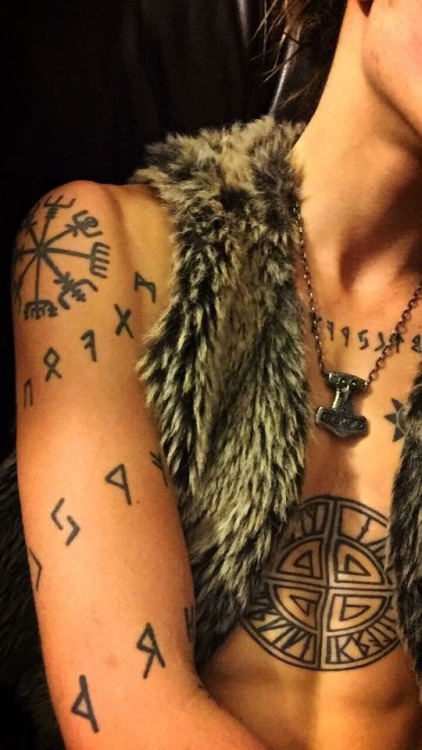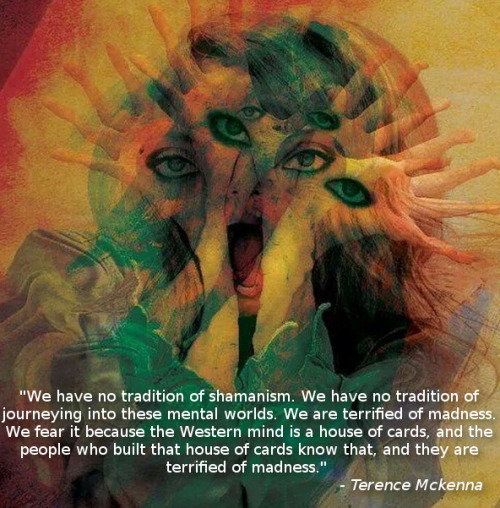#shamanism
Jaguar
Aztec: The powers of darkness in conflict with the solar eagle.
Mexican: The messenger of forest spirits.
Shamanistic: The jaguar is sometimes a familiar spirit of, or a form taken by, the Shaman.
[Source: An Illustrated Encyclopedia of Traditional Symbols by J.C. Cooper]
Post link
I started coming up with some ideas to make Goliath lore more interesting. I thought it would be cool if they had shamans who see glimpses of the future by spilling blood on ancestral stone and looking at how it spills over the stone.
Here are some sample omens based on how the blood spills that I have come up with (written from the perspective of the shaman):
“The blood trickles around these sacred stones like the weaving strands of a spider’s web. Just as the spider betrays the fly, someone aims to betray the chief.”
“Look, here, as the blood splashes against that stone and droplets of red seep into the dirt. Like the rain, it is. There will be a great downpour.”
“Ah, the blood pools in a small pond of crimson. But oh what is this that floats in the blood I have spilt? A raven’s feather. Oh, no. A great death approaches.”
“The blood trickles over this stone like a mountain brook. But oh. Oh no. Look as that Toad splashes in the blood. Our tribe shall face a coming plague.”
“Look, boy, as the blood swirls in a pattern that mimics the cosmos on a clear night. The spirals tell me that a great hero will soon be born.”
“Ah, yes, good. Just as the blood nurtures this flower that grows between the stone, so too will we be nurtured by good health this new year. This is good.”
As you can see it’s not just the pattern of the blood but how the blood interacts with the world around it. The shaman knows how to read the signs. Now so do you. Feel free to use in your own fantasy worlds, whether with Goliaths (or other giantkin), orcs, elves, humans, whatever you desire.
Also please note that just because blood is spilt and used to predict the future it doesn’t have to be evil. I imagine the shaman from my examples would be neutral good. And while it would make perfect since for a witch to do this too, witches dont have to be evil either.
I dont know what it is but there is something Evocative of freshly spilt blood on cold, mountain stone. It’s very mystical.
Enjoy.
Hail to Skadi, the Goddess of Winter, the Goddess of the Hunt; the White Wolf. We feel you.
Post link
And the old gypsy woman said to me, “Draped in your animal furs, protect yourself from the cold, my child, my child. Live off the land the Gods have given us, for they can as easily forge a monster strong enough to take it away. A monster within, my child, my child.”
Yes, this is me, I may start posting pictures of myself to put a face to this blog.
Post link

The Horned One
.
.
Photo taken during the Heilung concert in Copenhagen last year.
One of the shaman’s most important tasks was to act as a healer for those who had been struck with disease or pain. Not always necessarily a shaman had to act as a healer, village communities might’ve also had their own addressed healers who knew the ways of healing. There are more records of these designated healers having been female than male, but this remains debatable.
During the days past, Finns recognised two causes for disease. There were the godly diseases, jumalantaudit,believed to be of godly origin and therefore incurable or at least so difficult to heal that it would’ve been almost impossible. Jumalantaudit included ailments such as epidemics and sickness that came naturally with old age. The second disease category, so called panentataudit,included ailments like muscle pain, burning sensations, colic and spasms.
Panentataudit were believed to have been caused by kateet, jealousy. Back all those years ago it was common belief, no, not only belief but common knowledge, that the amount of happiness and luck was constant. This might be a hard concept to gasp, for now we know that that isn’t true. But back then it was clear that there was a certain given amount of good fortune and if one desired it, they had to steal it for themselves (if they didn’t otherwise have it.) And what this means is that people were jealous of others and their happiness, and this jealousy made them befall disease on others. Sickness could fall on someone if they had been given the “bad eye”, paha silmä, or if they had been cursed by witches. A witch’s curse was called pusku, it was a curse spat to the air with teeth gritting. In both cases the cause itself was born out of jealousy, kateet. Jealousy in a small village community had the framework for growing to a collective level and this way jealousy was able to inflict sickness and disease on anyone. Look at it like mass hysteria in a way.
The view that people had about the amount of good fortune being constant can also be clearly seen from and old phrase: “Ei köyhä rikastu ellei rikas köyhdy”, the poor doesn’t become rich if the rich doesn’t become poor. Another point worth wondering is one that we can find from the Kalevala, specifically the stealing of Sampo. Why did Väinämöinen set to steal the Sampo from Pohjola? Why didn’t Ilmarinen just forge another Sampo for the people of Kaleva? So that both of the realms could prosper and be wealthy without the other being robbed of their good fortune? I’ll just leave that out there for you to chew on, but it’s a fascinating question, isn’t it?
Now then, as I already mentioned in my post Sauna as a place of healing, the most important part of healing was to find out the origin and cause of the disease. If the patient had burn wounds, it was necessary to know how the fire that caused those wounds had started. If the patient had been cut with a blade, where was the blade from and who did it belong to. If the patient had been in an accident, where did the accident occur and what natural object had caused the injuries. On top of gaining this knowledge of the origin of the injuries, the healer would also use synnyt, birth words, for most healing.
Thesynnyt existed for almost all things know to people, they were the words of origin to elements, animals, plants and objects. For example if a patient had been struck with a steel blade by their neighbour in a fight, the healer would most likely use the synnyt, birth words, of steel along with verenseisautus, blood stanching words. The birth words were believed to hold immense power in them and were among the most important ones to know and remember.
People believed that diseases such as tooth aches, colic and goitre then again were actual living beings that existed inside the patient in a way. These diseases the healer would tell to go home to their mothers and fathers, they were chastened and upbraided. The act of talking to the causer of disease was manaus, exorcism. This included the birth words, synnyt, being recited to the causer. Afterwards would come the healing spell itself, which usually included little embedded tips for further self-care and/or blessings to grant the effectiveness of the cure provided by the healer (ointment, potion..)
For some diseases the healer would ask help from certain healing spirits, and the diseases (considered to be living beings, but without homes and parents, and also seen as worse than those with homes) were ushered to nasty places, most often to the cold Lapland, where it was believed that only bad things existed. Such diseases were for example constipation, scabies and frostbite.
If we take a look at characters like Loviatar, who according to folklore gave birth to plagues, it makes sense that diseases were talked to as living beings and were told to go back to their parents. Loviatar was a parent in that sense. It is also to be noted that many characters get mixed up in folklore, therefore Loviatartoo was known as MammotarandSyöjätär as well and it’s very hard to go and prove whether the three were actually just one being or if they were indeed three separate beings. Go and tell.
Bonus: words of the presser/nightmare, Painajan sanat, from the Häme region
Pane maate mantereelle
pyhän pellon piantareelle
Säkki alla, säkki päällä
puntari peräsi päällä
jolla painan painajata
ja hirtän hiirikkahevosta
(Go lay on ground / on the holy field / Sack under, sack on top / steelyard on your behind / with which I press the presser / suffocate the blue dun horse)
You’ve probably heard about how the Finns love and respect their sauna, a hot room where one can sweat off bad spirits. If so, you might have also heard that the sauna has been around for Finns for a long, long time and it has served as an important part of everyone’s life. You might also know that many healing traits and properties have always been associated with the sauna, and it has been so since, well, for as long as we’ve had saunas.
There were two haltias, spirits, associated with the sauna, Auteretar/Anterettoin, she was the feminine spirit of sauna who guarded wounds from the heat and kept them from getting infected. The spirit of the steam of sauna was in turn Auterinen, referred to as having been “made” by Auteretar, which could mean that he might have been Auteretar’s son. It’s only natural that a place such as the sauna, which was used not only for cleaning oneself but for healing the sick and wounded and also served as a common place for childbirth, had it’s own guarding spirits.
There was a fear of wounds getting infected by the hot air, but the pagan Finn didn’t know of a better place for healing than the sauna, which was to them a place of holiness of a kind, where the spirits were closer than elsewhere. This feeling could very well be explained scientifically; the warmth of the sauna affects the body and causes one to feel dizzy, which was usually one of the “symptoms” of the state of “being in one’s spirits” = olla haltioissa (a state the shamans would strive to reach when trying to connect with the higher powers.) The heated stones used to warm the sauna have been debated to be the remnants of pagan sacrificial stones and the act of throwing water on the rocks to symbolise sacrificing to the natural deities. This to me seems unlikely, but I wouldn’t go straight to debunking the idea either. Therefore, whether or not the Finnish sauna is indeed a relic of pagan sacrificial grounds will remain unsolved.
The ritualistic healing in a sauna was usually conducted under the cover of night. Some researchers have said that this was because the affect of day-time was considered to weaken the power of the ritualistic healing, but this is not entirely true; during the daytime Finns would’ve turned to Päivätär for assistance in healing rather than to the spirits of the sauna. There must have been variations to the healing rituals that took place in the sauna, but I will now take you through one of those variations, step by step, so you too can try and properly heal in the sauna. (I would, however, advise to go to a hospital or at least to a doctor in cases where skin has discoloured or ones guts are spilling out.)
- The hinges of the sauna’s door are oiled. This further increases the stealth mode the nighttime is already granting.
- The shaman/healer steps into the sauna with their patient and chants the following:
Terve löyly, terve lämmin, terve tervehtijällenki!
(Greetings steam, greetings warmth, greetings to the greeter as well!) - After the patient has been laid down, the healer takes their medicinal herbs and tools from their pouch so that they are easily accessible.
- The healer sticks an arrow to the floor of the sauna as a sign of being well prepared for the following healing and even against the bad spirits who might try and stop the spells from working and therefore from healing the patient.
- The healer sweeps the floor, ceiling and benches of the sauna with their bath wisk, vihta, this is done in order to properly cleanse the sauna before starting the healing itself. The vihtahas to be a special one, its branches gathered from unnamed meadows or otherwise secret places. It’s also good to strand in some healing herbs and plants.
- Now it’s time for the healer to “go into one’s spirits”, mennä haltioihin. This is done by reciting the words of steam, löylyn sanat.
Löyly poika Auterinen
Auterettaren tekemä
Hiki wanhan Wäinämöisen
Herran hengestä hyvästä
(Steam, son Auterinen / made by Auteretar / sweat of old Wäinämöinen / of lord’s good spirit) - The purpose of this is for the patient to also have trust in the healer, so it is endorsed that the healer greatly praises their own power, väki, and so makes the patient more trusting that they shall be healed. (Note: the healer can also recite different words, for example the words of water or of the bath wisk.)
- After these words of encouragement, the healer says a prayer to AuteretarandAuterinen and requests for their help in the following healing process.
- Here comes the hardest part. The healer must now figure out the source of the sickness and conjure it out of the patient.
The ancient Finns were not wrong in their belief that the sauna held immense healing abilities, in the modern times it has been proven that bathing in the sauna indeed reduces the risk of cardiovascular diseases and hence is good for one’s health. It’s also easy to imagine how wonderful and magical the sauna felt during the cold winters, warm and protective, like a mother’s embrace.
Question of the week
which of the following statements is false?
a) vulgar language was not used in sauna since it could upset the spirits
b) it was believed that Wäinämöinen’s sweat had healing abilities
c) the sauna was used for sacrificial rituals as well as healing
Heart-beat of the Medicine Bird
Daniel Mirante, 2015
180x130cm oil on linen
A traditional Shipibo-conibo quiquin (pattern-song-design, Colibri design) rendered into one-point perspective, then mirrored. The bolder lines emphasized to create a mandala-design. There are many other patterns that could have been brought out in this way - there are many ‘hidden variables’. I then depicted a heraldic archetypal forms, attempting a balance between location in the cone of vision, but also depth receding into the cone of vision.
Post link
I am now also at @shamanesschokbar on Instagram with all the photos to enjoy. Follow me there!
Shamanic Circle at the United Palace of Spiritual Arts
This will be Full Moon in Scorpio Shamanic Circle. Join me!
Shamanic Power Animal dance gives an unparalleled opportunity to take a break from your ego self. It takes you to a place you have never been before. It makes your hidden fears visible, it’s vulnerable and it’s incredibly freeing. It heals you.
My non-physical Spiritual Teacher K.
Creature Comforts | Rubin Museum of Art
Here is an article I wrote on why it’s important to know, understand and practice your Power Animals.
Put together a list of what you want to do, and not what you want to achieve, because by regularly doing something - the result will appear on its own.
My non-physical Spiritual Teacher K.
Power Animal Workshop Intensive at the Rubin Museum of Art, New York City
Rubin Museum of Art













